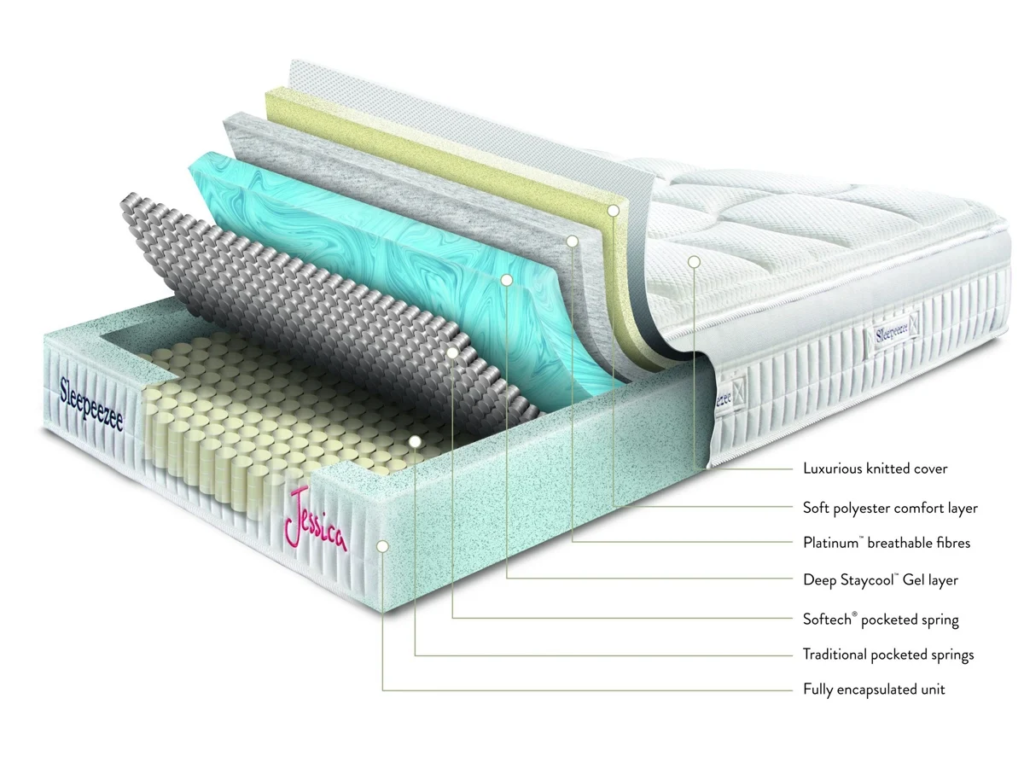Working night shifts will seriously disrupt your sleep cycle, but there are a few ways to make your body more receptive to daytime sleeping.
Being ruthless with your bedtime and wake-up times is the first step to changing your body’s internal clock. It’ll take around a week to start feeling tired during the daytime, but it will come along if you stick to it even on your days off.
You could also establish a series of actions (like opening curtains, stretching, or having a glass of water) that signal to your body that it’s time to be awake – these can make an enormous difference in getting you up and ready for your night shift.
Join us below for more night shift tips.
The problem with working nights
The human body evolved to sleep at night when the sun goes in. Working nights disrupts that primal instinct and is difficult to change.
Melatonin (the sleep hormone) in your bloodstream increases in the evening and peaks in the early morning. Less light exposure increases melatonin and makes you sleepy, making night shifts a massive chore.
Making a sleep routine
You should go to bed and set your alarm for the same time each day – this will gradually reset your body clock for night shifts.
If that isn’t possible, perhaps due to irregular shift patterns, try to have at least 4 hours of sleep at the same time each day, even if your shifts change.
Note down your upcoming shift schedule and plan your sleep times to suit. Short naps (20-30 minutes) before or during shifts can also help maintain alertness without interfering with your main sleep period.
Managing your sleep environment
Once you get home, you should have a quiet, dark, and comfortable space to sleep in.
Invest in a high-quality mattress that you find extremely comfortable – memory gel, latex foam, and pocket springs are all good choices.

Pictured: Sleepeezee Jessica 1800 Pocket Spring Gel Mattress, (Available from Bedstar)
Use blackout curtains, blinds, or a sleep mask to create a dark environment, and put in some earplugs to drown out any noises. A small fan or air purifier can also help you fall asleep with a consistent background noise.
Keep your bedroom cool, around 60-67°F (15-19°C), and set an alarm so that you wake up at a time suitable for your sleep schedule.
If you can’t sleep after 30 minutes, try thinking about nothing at all or something that makes you happy to beat out anxious thoughts.
Be wary of stimulants
Coffee and energy drinks may tempt you on your night shifts, but they could sabotage your sleep efforts when you get home.
Caffeine can interrupt your sleep patterns when taken up to six hours before bedtime – so if you have coffee at 11 pm, it’ll stimulate you until 5 am. Try to wean off stimulants on night shifts unless you are struggling to stay alert.
Managing your work environment
If you work in a well-lit warehouse, skip this step. But if you have control over your environment, such as an office cubicle or a hotel, you should use sunlight-mimicking lighting to tell your body and brain that it isn’t time to sleep yet.
Cool, bright, and indirect light is best for mimicking sunlight. You can achieve this with a light therapy lamp or light box. Position the light indirectly, slightly above and to the side of your line of sight.
Summing up
Night shifts can wreak havoc on your sleep quality and make you feel poorly, but that’s only during a relatively short adaptation period.
It takes a few weeks to adjust to a sleep schedule, but if you get enough sleep, you should feel like yourself in no time.













